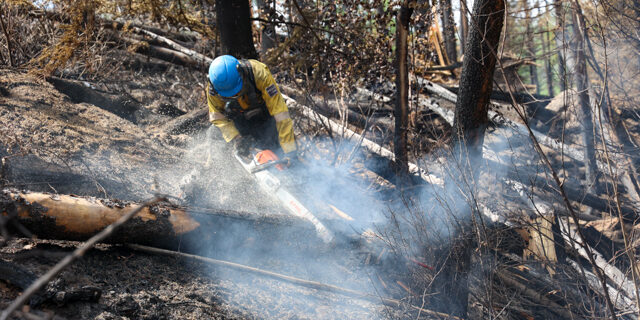A massive wildfire that spanned across 32,000 hectares devastated Jasper National Park for more than a week. Although Jasper has implemented fire preparation strategies in the area, this has been the largest wildfire the park has seen in the last 100 years.
With Jasper, AB, losing about 30 per cent of the town’s infrastructure, it has some worried about the surrounding smaller forest communities. Since Jasper is a designated national park, it has access to more funding and resources than other boreal forest communities.
Edward Struzik, fellow at the Institute for Energy and Environmental Policy at Queen’s University, stated that the Jasper wildfire reinforced the need for a national wildfire strategy.
“I can say with certainty that Jasper has perhaps done more than any other place in Canada to prepare itself for a fire. The fact that a fire did come into town and burn a third of it, raises some serious questions about how the rest of the country is prepared for fire,” said Struzik.
Struzik, who is also the author of Dark Days at Noon: The Future of Fire, has been researching the history of wildfires for years. He raised concerns that small boreal forest towns and Indigenous communities are more at risk and disproportionately affected by wildfires.
An analysis report from the Public Health Agency of Canada found that while Indigenous communities represent only five per cent of the population, they make up 42 per cent of wildfire evacuations.
“These are communities that don’t have the resources, the expertise, and the money to be able to prepare themselves for fire. So, I think this is the take home message for the federal, provincial and territorial governments,” said Struzik.
Progression on a national wildfire strategy is slow
Struzik noted that the federal government has made some progress on a national wildfire strategy, but its implementation has been slow.
The Canadian Council of Forest Ministers have released three Canadian Wildland Fire Strategy (CWFS) reports in the last 18 years. The latest CWFS which was released back in 2021 finally outlined an action plan to implement a national wildfire strategy by 2030.
“Among a number of different things, I think we need to invest more in wildfire science. That would help us better understand the nature of fire weather—when fires will ignite or where they will ignite, so that we can best allocate our resources to those areas,” said Struvik.
He also added that more investment into fire management of boreal forest towns is needed. Struvik noted that empowering smaller communities to learn how to deal with imminent wildfires is crucial to a national strategy.
“What could be done more is to better empower those small communities that don’t have the tax base to be able to deal with the fire or to hire the experts to do what is necessary to make themselves more resilient. Jasper, Banff and Waterton were able to do that because they’re national parks,” said Struvik.
“Small towns, especially small Indigenous communities just don’t have those resources—and I think it’s incumbent on the federal and provincial governments to address that and start allocating more resources to those areas.”
AUPE raised concerns about wildfire season earlier this year
Long before this year’s wildfire season started, the Alberta Union of Provincial Employees (AUPE) cautioned that the province was not ready for this year’s wildfire season. Although Alberta Wildfire is not the lead response team, they are assisting in the Jasper wildfires in addition to responding to other wildfires across the province.
READ MORE: AB budget fails to address recruitment and retention of wildland firefighters
Last week on July 26, Alberta had 180 active wildfires with 60 classified as out-of-control—now that number is down and there are 117 active wildfires with 23 out-of-control wildfires.
“What we saw from last year, the year before and now from this year, is that the government has no issue with bringing in people from other parts of the world to come and fight fires because we don’t have the staff to do it,” said James Gault, Vice President at AUPE.
“They would rather pay extra money to bring people in than to actually put the money into the resources here to fight the fires,” Gault added.
Firefighter crews continue fire suppression efforts in the Jasper area to minimize the damage as much as possible. Although Jasper is mourning the loss of historic buildings, there is a moment of respite as Global News reported that 70 per cent of the town’s infrastructure was saved.
As of July 30, Parks Canada reported that the occasional rainfall and cooler weather has reduced fire activity and provided a window for firefighter crews to subdue hotspots. The wildfire remains classified as out of control and Parks Canada have noted that the Jasper wildfires may continue for at least the next three months.
“Our wildland firefighters, they’re called into some massive fires—we trust them to protect Albertans, and they do the very best that they can. I would never want to blame our members for any fires that get out of control,” said Gault.
“The out-of-control fires are always based on bad policy [and] not having the proper resources at the right timing. It’s a failure of the government to properly fund and look ahead into what could possibly happen …. we were not prepared, but our hearts go out to the people in Jasper who have lost everything,” Gault concluded.



